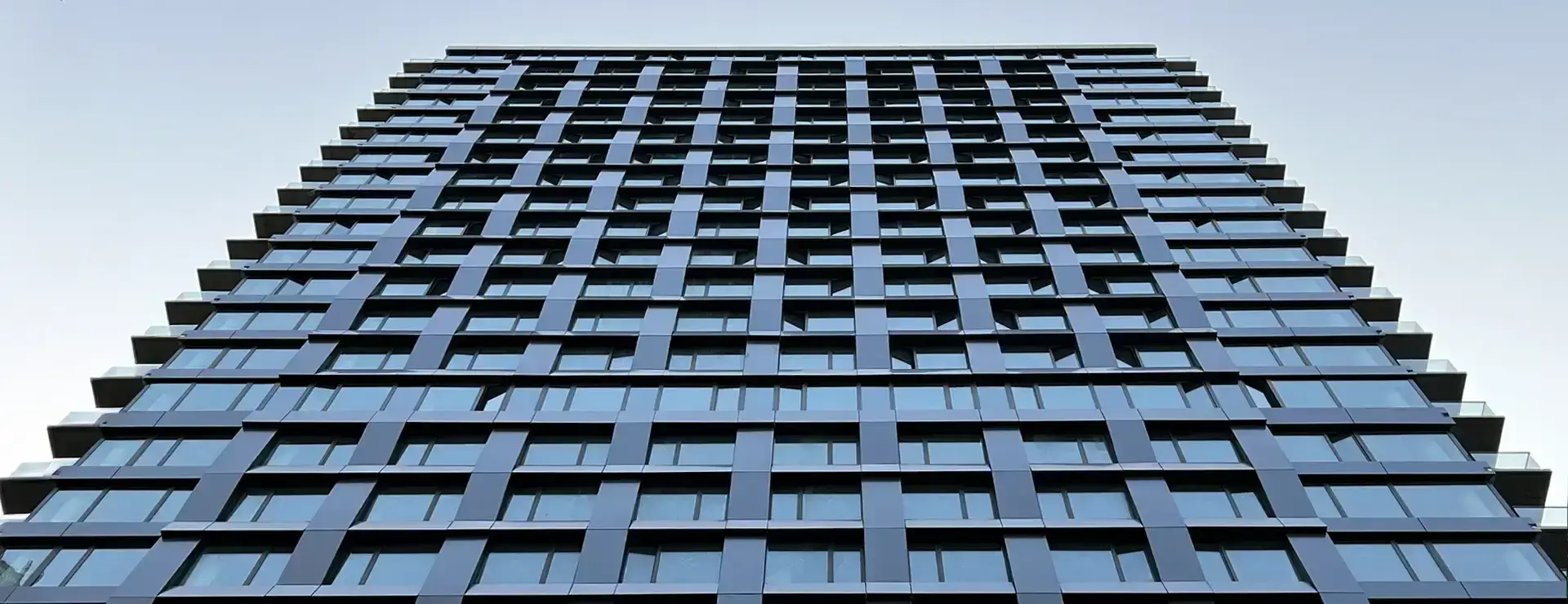

Window walls are becoming more and more common in modern residential and commercial buildings in the USA. They are systems of large glazed panels mounted on individual building stories. Apart from giving the building a sleek and modern look, this solution maximizes the amount of daylight entering the interior, significantly improving the comfort of residents and users. With their characteristic installation method, window walls are also very practical during the construction phase.
In the United States, window walls have become extremely popular in modern buildings, particularly in large cities such as New York, Los Angeles and Chicago. Their popularity can be attributed to several key benefits, including the following:
Buildings featuring window walls stand out with their lightweight, modern design and offer spectacular views, a huge advantage for property owners and users. Furthermore, this solution provides excellent insulation parameters, an essential factor in urban environments where noise and changing temperatures can affect the comfort of living.
One of the most frequently asked question about window walls is how they differ from traditional windows The key difference lies in the method of installing the glazing. Traditional windows are fixed directly into window openings, requiring precise positioning and on-site glazing. Any finishing work is possible only after the installation of the metal joinery.
By contrast, the installation of window walls is done using a system of top compensation profiles and bottom starter profiles, a solution commonly used in the USA. This makes the installation process extremely efficient and allows investors to quickly achieve a modern visual effect.
In response to the growing demand in the U.S. market, Aluprof has developed the innovative MB-79N WW modular windows, a prime example of modern window walls. These windows allow for fast and efficient installation of glazing, creating a stunning floor-to-ceiling glass effect for maximally large transparent surfaces.
Thanks to its design, the system enables the production of lightweight, prefabricated elements. These modules are fully manufactured in production plants, which are better equipped to ensure proper operational quality control. The use of a top mounting and compensating profile makes it possible to adapt the structure to various types of building movements so as to meet the design criteria for static-mechanical loads and concrete slab deflection with a tolerance of ± 1 inch.
This solution is ideal for investors seeking innovative, aesthetically pleasing and energy-efficient windows for modern high-rise buildings. Notably, MB-79N WW modular windows were first used in the building at 625 Fulton Street, New York. This impressive 36-story, 500-foot tower is a mixed-use building located in the heart of Brooklyn. The building houses 1,098 residential units and 26,000 square meters of commercial space. Other examples of uses of MB-79N WW windows include residential buildings at 210 Clarkson Avenue and 2840 Atlantic Avenue in Brooklyn.
With their modern design, MB-79N WW windows help to streamline the investment process, raise architectural standards and enhance the energy efficiency of these buildings. Below are the key benefits of the MB-79N WW:
Window walls undoubtedly play a key role in defining modern architecture, particularly in the United States. Their growing popularity highlights their huge potential in residential and commercial construction. By combining a characteristic structure with outstanding aesthetics, functionality and energy efficiency, they stand out as one of the most forward-looking solutions available in today’s market. As ever new projects featuring the MB-79N WW system find their way into Aluprof’s portfolio, we can see a constant need to improve Window Wall systems along with their expanding presence beyond the USA.
At Aluprof, we are continuously developing innovative solutions that blend cutting-edge technology with unique design. To cater to our customers’ expectations, we are introducing new products in the segment of aluminum doors. The latest additions to our range include the MB-Skyli...
Modern construction increasingly relies on state-of-the art technologies and materials that combine aesthetics with functionality. These include aluminum façades. Being versatile and durable, they are very popular in both residential and commercial buildings. Let’s take a closer ...
Are you dreaming of a house that stands out from the rest? Would you like to add a unique and luxurious twist to your real estate? Facade slats are the perfect solution to match your expectations. They add a beautiful and modern touch to the facade, allowing you to create unique ...